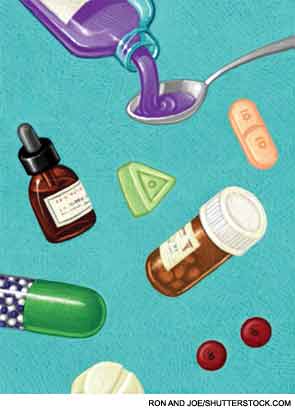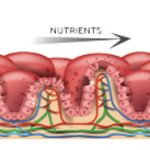

A placebo works only if the patient believes it’s an effective medicine. Within strict limits, hope, it seems, can be transformed into biochemistry.
—Carl Sagan, The Demon-Haunted World: Science as a Candle in the Dark
Could a greater miracle take place than for us to look through each other’s eyes for an instant?
—Henry David Thoreau
Making the diagnosis was the easy part. There were so many obvious clues. The limping gait when she entered the exam room, the flaccid handshake, the swollen knuckles. A textbook case of rheumatoid arthritis (RA). Mimi managed an organic farm in southern Vermont. At the outset of her visit, she conveyed her skepticism about the benefits of traditional medicine. She confided that she only kept her appointment with me to placate her older sister, a biomedical engineer.
Mimi’s knowledge of RA was quite impressive. She subscribed to several reliable medical websites and was aware of the treatment paradigms for her disease. We discussed the various options, yet she was hesitant about starting any drug regimen for managing her moderately severe RA. She believed that all drugs used to treat RA were toxic. Though I vehemently disagreed, I could not really blame her. The sheaf of information sheets outlining the potential side effects of the various disease-modifying drugs that I provided Mimi seemed to prove her point. Nausea, hair loss, risk for serious infection, liver inflammation, low blood counts—all were unacceptable risks for her. She was a woman who ran a successful organic farm and believed that there should be a better way for doctors to treat disease than by prescribing “toxins.” She was more interested in hearing about complementary therapies for RA. I explained that the term complementary meant using a non-mainstream approach together with, and not in place of, conventional medicine. Mimi thanked me for my time. She said that she would contact me with her decision, though it was obvious that I failed to convince her to begin any conventional therapy. I was deeply frustrated. Unlike many of the other diseases that we manage, RA is highly treatable, so it was disappointing to see her leave my office without a management plan.
A few months later, much to my surprise, Mimi paid a return visit. Outwardly, she looked the same as she did on her first visit—bright and cheerful—though her joints were still quite boggy and swollen. She told me that she found a “completely natural” herbal supplement online, which she was using to treat her RA. Not only was this supplement extremely effective in reducing joint pain and fatigue, it had no side effects! She felt “like a million bucks.” I was pleased to hear this news, but her persistent joint swelling concerned me. Mimi countered that with, “my hands are doing fine, and I can still do all my chores. So I see no reason to make any changes.” We parted ways. That was the last time I saw Mimi.
Celebrity Medicine
For some, a quick, easy, and safe fix for whatever ails us is generally preferable to more traditional, riskier therapies, even if the scientific evidence for the former is lacking. In the past, there was Franz Anton Mesmer who, in the 1700s, claimed to have discovered a healing fluid that, when applied to the body, would heal any disease. About a century later, Samuel Hahnemann introduced homeopathy, based on the belief that very small amounts of the same substances that can cause disease can heal it as well. Copper bracelets, magnets, bee stings, and molasses have each had their heyday as treatments for arthritis, and they still generate periodic spikes of intense interest.
Garnering a celebrity endorsement virtually assures the popularity of a remedy. For example, in 2004, Teresa Heinz Kerry, the wife of John Kerry—who was, at the time, running for president—advocated a folksy treatment for arthritis while attending a campaign rally in Reno, Nevada. “You get some gin and get some white raisins—and only white raisins—and soak them in the gin for two weeks,” she explained. “Then eat nine of the raisins a day.”1 Really! How about if I substitute dark raisins for white? Or soak them in vodka instead of gin? Surely the remedy’s specificities add to its mystique.
Perhaps the most popular dietary manipulation today is the gluten-free diet. There is no doubt that this diet can be extremely effective in managing patients with celiac disease. The problem with the diet is how it is being touted as the panacea for virtually any ailment. Just Google the word gluten, together with the name of any disorder, and you will find links to a world of testimonials confirming the diet’s amazing success. For example, the phrase gluten and lupus generates 2.6 million links, which is about double the number generated by gluten and RA.
Many celebrities have endorsed the gluten-free diet, including the world’s number-one men’s tennis player, Novak Djokovic. In 2010, he was in a rut, frequently losing critical matches. While watching Djokovic struggle through a set at the Australian Open, a fellow Serbian, Dr. Igor Cetojevic, believed he could diagnose his problem. Never mind that Dr. Cetojevic was at home in Cyprus, watching the match on television, 8,700 miles away from Melbourne. He deduced that Djokovic’s breathing difficulties were likely caused by, of all things, a digestive problem. Through a mutual friend, he arranged to visit the tennis star a few months later. What happened next is well summarized in a recent article about Djokovic in The New Yorker.2
Cetojevic suggested that Djokovic undergo a series of tests. For instance, he asked Djokovic to put his left hand on his stomach, extending his right hand straight out and pushing up while he pressed on it from above. “This is what your body should feel like,” Cetojevic said. Then he gave Djokovic a slice of bread and told him to hold it against his belly, while again straightening his right arm. In Serve to Win, Djokovic writes, “With the bread against my stomach, my arm struggled to resist Cetojevic’s downward pressure. I was noticeably weaker.” Cetojevic concluded, “This is a sign that your body is rejecting the wheat in the bread.” Cetojevic suggested that Djokovic eliminate gluten from his diet.
The program was hard to fathom—his parents owned a pizza parlor! Djokovic was desperate enough to try it, and, once he did, he experienced it as a complete rebirth. As he recalls: “I could tell the moment I woke up each morning that I was different than I had been, maybe since childhood. I sprang out of bed, ready to tear into the day ahead.” One day, as an experiment, he ate a bagel. He writes, “I felt like I’d spent the night drinking whiskey!”
Novak, I think you should stick to tennis!
A History of The Placebo
The term placebo, derived from the Latin verb placere (to please), has its origin in religion. The fourth century theologian St. Jerome erred in his translation of the verb in the ninth line of the 116th psalm. Instead of translating the Hebrew phrase, “I shall walk before the Lord,” he wrote: “I will please the Lord.” (Placebo Domino in regione vivorum).3 In the Middle Ages, when hired mourners waited for the prayers for the dead to begin, they often chanted this line repetitively, and thus became known as “placebos,” to describe their feigned behavior. Similarly, Chaucer named his sycophantic, flattering courtier in The Canterbury Tales Placebo.3
The first described use of placebo controls was recorded in the 16th century. At the time, exorcism was widely practiced. In an effort to gain control over this activity and to discredit some of its practitioners, Catholic clergy performed sham exorcism procedures.4
The medical interest in placebo effects did not gain widespread adoption until the end of the Second World War, when clinical investigators adopted the use of randomized controlled trials. This required the drug under study to be compared to an active comparator arm, which generally consisted of a placebo therapy. Study investigators noted something quite unexpected. Regardless of the drug or treatment being studied, about one-third of patients assigned to the placebo arm responded favorably.
What Drives The Placebo Effect?
The placebo effect is a fundamental part of the healing process. In fact, this effect is considered by some authors to be hardwired in our brains, since it may offer an evolutionary advantage to the host by providing a critical pathway for promoting optimal health.5 It has been observed more commonly in the field of psychiatry, where some consider psychotherapy to be the ultimate placebo therapy. In Parkinson’s disease, the placebo effect has been shown to improve symptoms by enhancing dopamine release in the basal ganglia.6 It has been found to modulate the response to pain by increasing brain endorphin and endogenous opioid production, similar to what has been observed in the “runner’s high.” In a fascinating study of rectal pain, functional magnetic resonance imaging (fMRI) observed that the expectation of pain relief could substantially change the perceived degree of pain of visceral stimuli. This effect was modulated through activation of pathways in the prefrontal and somatosensory cortex and the thalamus.6 These studies seem to delineate the biological basis for the observation by the late astronomer Carl Sagan, who elegantly stated that “hope can be transformed into biochemistry.”7
We must remember that our words, attitudes, and behaviors play dominant roles in both the doctor–patient interaction and in the placebo response. Yes, we can be honest and compassionate at the same time.
Nocebo: Placebo’s Evil Twin
Negative expectations deriving from the clinical encounter can produce negative outcomes. This was apparent during my encounters with Mimi. Though she never took any of the drugs that I recommended, I suspect that none would have been tolerated. We have learned that in placebo-controlled clinical trials, patients receiving a placebo therapy often reported side effects that were similar to those experienced by patients receiving the study treatment. In fact, this phenomenon may be attributable to the mere communication of potential adverse effects in the informed consent process.8 This is known as the nocebo response. It may explain the consistent observation that about one-quarter of patients assigned to the placebo arm of any randomized controlled trial of a nonsteroidal antiinflammatory drug (NSAID) routinely developed the gastrointestinal side effects of the comparator NSAID. In another study comparing aspirin to sulfinpyrazone for the treatment of unstable angina, the authors found that the inclusion of possible gastrointestinal side effects in the consent forms resulted in a six-fold increase in both the frequency of these symptoms and the number of patient withdrawals from the study.9
Harnessing the Placebo Effect
When we discuss therapeutic options with patients, it is critical that we frame our conversations carefully. For a moment, consider these discussions from the patient’s point of view. The reams of drug information material that we provide them, the lengthy printouts attached to the prescription bottles, the side-effect warnings at the end of each television ad, all sound an ominous tone: these drugs can hurt, or even harm, you. The sheer number of side effects that are listed can drown out any of the positive attributes of a treatment or a drug. Yet, we cannot return to the days of paternalistic medicine when “doctors knew best” and saw little need to be honest and forthright with patients about their illnesses and their treatments.
We must remember that our words, attitudes, and behaviors play dominant roles in both the doctor–patient interaction and in the placebo response. Altruism, empathy, and compassionate behavior emerged sometime during the course of human evolution. It is postulated that facial expressions are likely to have evolved for eliciting medical attention from others.10 These expressions of pain were thought to trigger the caregiver’s empathic and compassionate behavior. Yes, we can be honest and compassionate at the same time. We may not win over every patient’s heart and mind, but exuding a quiet confidence, a steady determination and sense of concern will help many of those seeking our help. After all, that seems to be the way we are wired.
Dr. Helfgott is physician editor of The Rheumatologist and associate professor of medicine in the division of rheumatology, immunology, and allergy at Harvard Medical School in Boston.
References
- O’Connor A. The claim: Raisins soaked in gin can ease arthritis pain. Published October 3, 2006. Available at www.nytimes.com/2006/10/03/health/03real.html. Accessed September 13, 2013.
- Collins L. The third man. New Yorker. Published September 2, 2013. Available at www.newyorker.com/reporting/2013/09/02/130902fa_fact_collins. Accessed September 13, 2013.
- Finnissa DG, Kaptchuk TJ, Miller F, et al. Placebo effects: Biological, clinical and ethical advances. Lancet. 2010;375:686-695.
- Kaptchuk TJ, Kerr CE, Zanger A. Placebo controls, exorcisms and the devil. Lancet. 2009;374:1234-1239.
- Brown WA. The Placebo Effect in Clinical Practice. Oxford University Press: New York, 2012
- Elsenbruch S, Kotsis V, Benson S, et al. Neural mechanisms mediating the effects of expectation in visceral placebo analgesia. An fMRI study in healthy placebo responders and nonresponders. Pain. 2012;153:382-390.
- Carl Sagan. The Demon-Haunted World: Science as a Candle in the Dark. Random House: New York, 1995.
- Barsky AJ, Saintfort P, Rogers MP, et al. Nonspecific medication side effects and the nocebo phenomenon. JAMA. 2002;287:622-627.
- Myers MG, Cairns JA, Singer J. The consent form as a possible cause of side effects. Clin Pharmacol Ther. 1987;42:250-253.
- Benedetti F. Placebo and the new physiology of the doctor–patient relationship. Physiol Rev. 2013;93:1207-1246.


